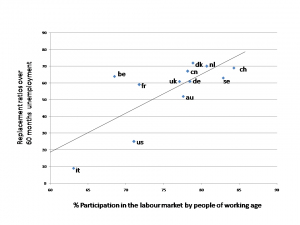The DWP has issued a consultation about changes to the claimant count. Once upon a time, we used to have a count of the numbers of people who were unemployed. That count was persistently too high, despite a long series of downward revisions. In the 1980s the government started to use the ‘claimant count’ instead, focusing on benefit receipt and excluding many people who were looking for jobs but who weren’t claiming benefit. The claimant count series goes back to 1971; it correlates with unemployment figures, but it is usually lower. Now, all too predictably, the claimant count has been rising. It’s happened because the rules of JSA, ESA and Universal Credit demand that people are treated as looking for work. The two options in the consultation are both intended to massage the figures so that things don’t look quite so bad.
There is another option, of course. The ONS already keeps figures from the Labour Froce Survey, which counts unemployment in the terms of the international definition used by the ILO. The series goes back to 1984, when the government dropped the old count of unemployment. It has also stopped using the claimant count from its Labour Market Statistics, because it’s meaningless as an economic indicator. Indicators are not particularly useful when the conditions they’re kept under change. So why are we using the claimant count at all?
